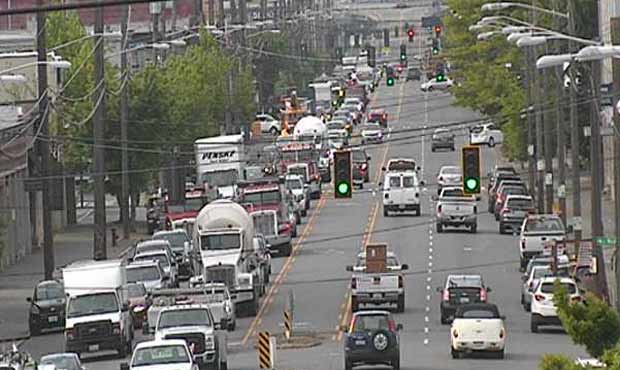What we’ve learned so far from Seattle’s viaduct closure
May 4, 2016, 1:55 PM | Updated: 4:11 pm

Here’s what we’ve learned about the closure of the Alaskan Way Viaduct so far:
One thing is clear and that is Seattle traffic is quite different during the morning commute versus the afternoon drive. Jon Lazer with the Seattle Department of Transportation said that afternoon commuters have been flocking to the surface streets in SoDo to make their exit from the city. The biggest issue has been that cars linger and block intersections.
Check current traffic conditions
“We’ve had more than double the number of blocking incidents in the two weeks leading up to the closure,” Lazer said.
Anyone driving on surface streets over the past couple of days can testify that congestion is considerable on 1st Avenue, 4th Avenue and 2nd Avenue. There has also been more fender benders due to drivers getting caught in the intersection or cutting people off.
At the start of the Tuesday afternoon commute, a traffic light was malfunctioning on 1st Ave near Horton, which backed up traffic. It was eventually reset.
Lazer says they’ve tried to better synchronize the traffic lights to help drivers, especially on 4th Avenue.
People choosing transit over cars
Ridership is up 10 percent on the light rail and 15 percent on the Sounder train; more than 2,000 new people have taken Metro buses and the West Seattle Water Taxi is seeing triple ridership, according to their respective agencies.
So whatever new method you are using, keep it up!
Bertha is still en route to complete 385 feet of the tunnel before the Alaskan Way Viaduct reopens to traffic. So far, the machine has excavated about 149 feet under the Alaskan Way Viaduct since it started moving last Friday.












